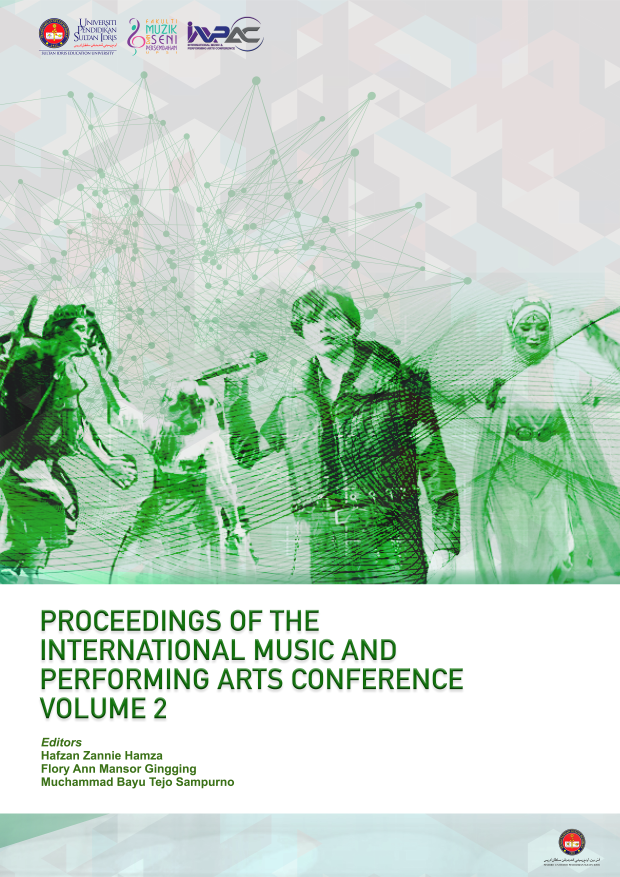Aesthetic Politics: The Tendency of Anti-Visual Rationality and its Political Potential in Jean Genet's The Balcony
DOI:
https://doi.org/10.37134/impac.v2.2.2024Keywords:
visual, aesthetics, politics, sensory redistribution, BaroqueAbstract
Greek philosophy emphasizes an eternal present, where the immediacy of vision fixes fleeting appearances into a static essence of existence. Particularly during the Renaissance, the invention of perspective placed the eye focused on the vanishing point at the center of absolute viewing, initiating the process of privileging modern vision. Descartes posited that seeing is knowing, asserting that the fixed images observed visually represent the inherent essence of reality, leading to a dualistic epistemology. Perspective art has always dominated the theater, positing that by creating illusion, inactive vision allows audiences shrouded in darkness to grasp the nature of things directly through their eyes, forming a rational consensus that reinforces identification with political ideology. The politics of Genet’s theater is aesthetic politics, emphasizing the dual potential through sensory redistribution. However, in studies of Genet's The Balcony, prioritizing visibility has become a dominant strategy, leading to a representation of politics in the theater as something recognizable and solvable, establishing a hierarchy in which theater subordinates itself to political functions. This study argues that in The Balcony, Genet reconfigures the tradition of perspective in theater through a Baroque visual arrangement, showcasing a tendency to degrade visual rationality while enhancing visual perception through dazzling effects. Drawing on Deleuze’s and Benjamin’s theories of the Baroque, combined with Rancière’s theory of aesthetic politics, this study will utilize textual data and analysis to discuss how Genet’s theater in The Balcony redistributes the visual regime of the stage, disrupting the fixed relationship between things and meanings within the power dynamics of the visible and the invisible, and achieving a democratic visual construction of theater amidst uncertainty. The discussion will focus on the visual configurations of perspective and allegory, offering new possibilities for realizing aesthetic politics in Genet's theater.
Downloads
References
Adorno, T. W. (2002). Aesthetic theory. Continuum.
Benjamin, W. (2003). The origin of the German tragic drama. Verso.
Deleuze, G. (1993). The fold. The University of Minnesota Press.
Dort, B. (1979). Genet: The struggle with theater. trans. Ruth Goldfarb. In P. Brooks & J.Y. Halpern (Eds.), In Genet: A Collection of Critical Essays (pp.114-128). Englewood Cliffs, NJ: Prentice-Hall.
Fieni, D. (2006). Genet’s The Screen as media allegory. In C. Finburgh, C. Lavery & M. Shevtsova (Eds.), Jean Genet: performance and politics (pp.57-67). Palgrave Macmillan.
Genet, J. (1966). The Balcony. (B. Frechtman, Trans.). New York. Grove Press.
Goldmann, L. (1979). The theatre of Genet: A sociological study. In P. Brooks & J.Y. Halpern (Eds.), In Genet: A Collection of Critical Essays (pp.31-46). Englewood Cliffs, NJ: Prentice-Hall.
Holly, M. A. (2018). Past looking: Historical imagination and the rhetoric of the image. Cornell University Press.
Jay, M. (1993). Downcast eyes: The denigration of vision in twentieth-century French thought. University of California Press.
Jonas, H. (1954). The Nobility of Sight. Philosophy and Phenomenological Research, 14(4), 507–519. https://doi.org/10.2307/2103230
Lavery, C. (2010). The politics of Jean Genet’s late theatre: Spaces of revolution. Manchester University Press.
Lehmann, H. T. (2006). Postdramatic theatre. Routledge.
Lucas, K. (2020). A Parasociology: Jean Genet in the Age of Celebrity Worship. Religion and the Arts, 24(3), 290-317.https://doi.org/10.1163/15685292-02403003
Melcer-Padon, N. (2020). Visual Mask Metaphors in Jean Genet and Maurizio Cattelan. Partial Answers: Journal of Literature and the History of Ideas, 18(1), 67-82. https://dx.doi.org/10.1353/pan.2020.0003
Rancière, J. (2009). Aesthetics and its Discontents. Polity.
Rosen, C. (1992). The Structure of Illusion in Genet's The Balcony. Modern Drama, 35(4), 513-519. https://doi.org/10.3138/md.35.3.513
Shevtsova, M. (1987). The consumption of empty signs: Jean Genet's The Balcony. Modern drama, 30(1), 35-45. https://doi.org/10.3138/md.30.1.35
Smith, M. W. (2017). The Nervous Stage: Nineteenth-Century Neuroscience and the Birth of Modern Theatre. Oxford University Press.
Tomlin, L. (2019). Political Dramaturgies and Theatre Spectatorship: Provocations for Change. Bloomsbury Publishing.
Downloads
Published
Issue
Section
License
Copyright (c) 2024 Xiaoran Wang, Rosdeen Suboh, Farideh Alizadeh (Author)

This work is licensed under a Creative Commons Attribution-NonCommercial-NoDerivatives 4.0 International License.
Authors retain copyright and grant the Proceedings of the International Music and Performing Arts Conference (IMPAC Proceedings) the right of first publication.
This licence permits unrestricted use, distribution, and reproduction in any medium, provided the original work is properly cited.




